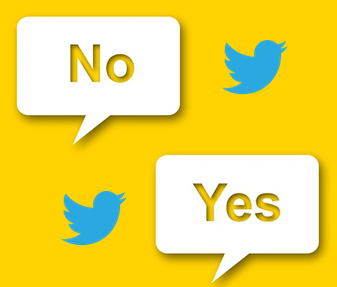Last week Twitter announced that they were rolling out a new poll option that you can use within a Tweet. Users will be able to create their own two-choice poll right directly from the Tweet compose box and it will remain live for 24 hours. Users will be able to vote on any poll, and how you voted will not be shared publicly.
Twitter poll test
I tested this out over the weekend. Within the 24 hours the poll was open 22 people voted, 2 retweeted and 3 favourited my Tweet containing the poll. Some commented to say they did not yet have this option, and that the poll could be seen on their mobile but not on the laptop. As the new option is rolled out this should resolve these issues.
Which is your preferred social network for informal learning opportunities and CPD? #highered #edtech
— Sue Beckingham (@suebecks) October 24, 2015
The final results tally the number of voters and the results are shown as percentages.
How to create a poll
Create a new Tweet and click on the Poll icon. Add your question as a Tweet and two options for the answers. This could be a very simple Yes/No, Agree/Disagree – or more detailed answer options.
Once you have added the question ans the answer options you can then share the Tweet with your followers. You may want to consider pinning this Tweet to the top of your timeline so that viewers of your profile can see it instantly and you can keep a check on the incoming votes.
Twitter’s Intro to Polls
Coming soon! We’re rolling out the ability for everyone to create polls on Twitter: https://t.co/pH5a8q9Ujz pic.twitter.com/ijAKEMUdf1
— Twitter (@twitter) October 21, 2015
How could this simple poll option be useful?
Clearly as the poll is restricted to two answers and only open for 24 hours, you are only going to get limited responses. However if used during events or classes where live tweeting is taking place you could get some instant feedback. This could encourage the shyer members to engage without having to speak out or be in fear of giving an incorrect response. Below are some examples of how the Twitter poll might be used:
- Opinion Poll – engage the audience and use the responses to inform a debate
- Choosing topics for revision – pinpoint what students are struggling on and know what to focus on as revision.
- Embed polls in your blog or VLE – embedding the tweet could add an interactive element to your blog post or Blackboard module site.
- Reaction to real-time events – this could gauge either predictions just before or reactions to live results.
- Gathering lean data – For example prior to a Careers Fair ask if students are looking for internships or part-time work
The poll within Twitter will come into play when your audience are already using Twitter or are encouraged to do so. One advantage of having the poll within Twitter is the immediate visibility. The poll can also be quickly retweeted and shared to reach a wider audience.
It’s limitations include the restriction on the number of answers and that there is no option to add a free form field for answers. Even if this was limited to 140 characters it would be a bonus!
Other polling tools
There are a number of other polling tools to consider which offer from one word answers to multiple choice options. Examples include:
- AnswerGarden which portrays one word answers as a word cloud.
- Poll Everywhere and Socrative that provide more answer type options and include free fields.
- To agree and schedule a date for a meeting or event Doodle is simple and quick to deploy.
- For more in depth surveys you might want to consider Survey Monkey or Google Forms.
What other polling tools would you recommend?










